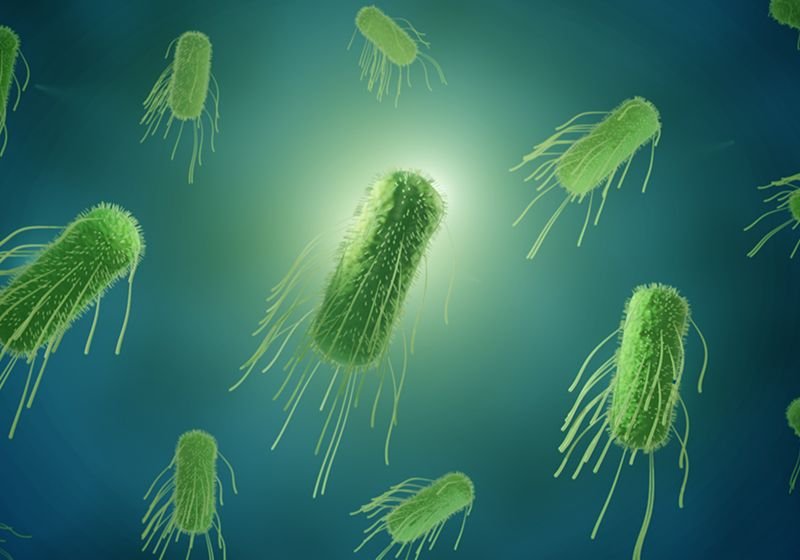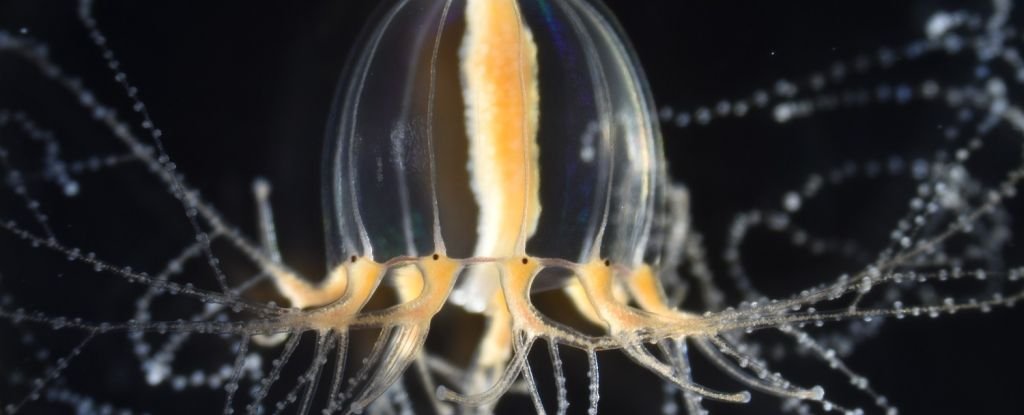Foodborne illnesses are a major public health burden, affecting almost 50 million people in the United States each year.1 Among the top five microbes that make people sick from eating contaminated food are nontyphoidal serovars (NTS), or subtypes, of Salmonella. Most people infected by these bacteria experience gastrointestinal symptoms that go away in a few days, but others may become long-term carriers of NTS.2
Recently, an international team of researchers sought to better understand the adaptations that Salmonella NTS undergo to linger in humans. They discovered mutations in the signal transduction histidine-protein kinase (barA) and response regulator (sirA) genes, which control the expression of virulence factors, across different patients infected with different serovars of Salmonella.3 These barA/sirA mutants downregulated immune response genes in host cells and showed attenuated virulence and the ability to establish long-term infections in mouse models. The results, published in Cell Host & Microbe, reveal genetic changes that may enable NTS to cause chronic infections in people.
“Persistent infections [caused by] nontyphoidal Salmonella are understudied in humans,” said Manuela Raffatellu, a host-pathogen interaction researcher at the University of California, San Diego, who was not involved in the research. “They found some patterns that are potentially important to understand how Salmonella behaves in the host.”
To uncover Salmonella’s tricks to persist, Ashlee Earl, a microbiologist at the Broad Institute, teamed up with Ohad Gal-Mor, a molecular microbiologist at the Tel Aviv University who studies Salmonella pathogenesis. Salmonellosis is a notifiable disease in Israel, meaning that health providers are required to report to government health authorities when they identify someone with it. For almost two decades, bacterial isolates have been collected from patients and sent to a national repository. “Our collaborator had special access to this repository,” Earl explained. “That just opened up the box for us to think about what we could do with that amazing collection and how it could be useful to answer long-standing questions in the field about how bacteria adapt during chronic infection.”
Previous work by Gal-Mor’s team showed that 2.2 percent of all NTS cases in Israel over a 17-year long period were long-term infections that lasted for 30 days or more.4 By genome sequencing bacterial isolates of 11 chronically infected patients, they uncovered mutations in virulence regulatory genes, but the researchers could not identify conserved patterns across the different patients.
In the new study, Earl, Gal-Mor, and their colleagues performed whole genome sequencing of bacterial isolates from 256 Israeli patients with chronic salmonellosis. To identify mutations that allowed NTS to persist, the team examined isolates from the same patient, comparing the first sample taken at the diagnosis (early) with a subsequent isolate collected at least 30 days after the first (late).
They identified 49 serovars that can cause persistent salmonellosis. A closer look at the late isolates revealed that barA and sirA mutations were the most frequent. “When we found these hits on barA/sirA, we thought that that was a really interesting pathway to be affected during persistence,” said Alexandra Grote, a postdoctoral researcher in Earl’s group and coauthor of the paper.
BarA and SirA form a two-component regulatory system that controls the expression of virulence genes, including those located on Salmonella pathogenicity island 1 (SPI-1).5 To test whether the mutations in barA and sirA could affect the host response to the bacteria, the team infected mouse macrophages with wildtype or isogenic Salmonella strains carrying either a barA or sirA mutation identified in the patients. Both barA and sirA mutations induced downregulation of genes involved in the immune response, indicating that these acquired genetic changes may affect the host’s response to NTS.
The researchers then sought to determine the effect of these mutations on Salmonella’s virulence in vivo. They coinfected mice with equal amounts of marked bacteria from early and late same-patient isolates. Four days after infection, they plated the bacteria collected from different organs and counted the relative bacterial load of each of the isolates. “In every case, the early isolate was more virulent than the late isolate that had either the barA or sirA mutation,” said Grote, suggesting that these mutations led to attenuated virulence in an acute infection model.
To assess if these less virulent Salmonella could sustain an infection, the team injected mice with barA/sirA mutants or a wildtype strain previously used as a Salmonella persistence model, and analyzed the bacteria’s presence in gastrointestinal organs as well as in the mice’s stools for up to 21 days. At later time points, the researchers found barA/sirA mutants in different organs and observed comparable levels of shedding to the wildtype strain, suggesting that these less virulent bacteria can establish long-term infections.
Although shedding is an indicator of success in transmission, it remains to be determined whether these mutants can actually infect another host, noted Denise Monack, a microbe-host interaction researcher at Stanford University, who was not involved in the study.
Both Monack and Raffatellu are curious about the factors that make these bacteria less virulent in persistent infections. Further analysis of the immune responses of chronically infected patients may shed light on some of these factors, according to Raffatellu. Monack also pointed out that looking at the niches where these bacteria are in the gut might reveal differences driving this bacterial evolution.
“Most of us don’t get persistently infected with these nontyphoidal Salmonella,” said Monack. “So, there is something on the host side that’s impacting that.”
References
- CDC. Estimates of Foodborne Illness in the United States. Centers for Disease Control and Prevention. Last Reviewed November 5, 2018. Accessed May 9, 2024.
- CDC. Salmonella. Centers for Disease Control and Prevention. Last Reviewed April 17, 2024. Accessed May 9, 2024.
- Grote A, et al. Persistent Salmonella infections in humans are associated with mutations in the BarA/SirA regulatory pathway. Cell Host Microbe. 2024;32(1):79-92.e7.
- Marzel A, et al. Persistent infections by nontyphoidal Salmonella in humans: Epidemiology and genetics. Clin Infect Dis. 2016;62(7):879-886.
- Martínez LC, et al. Integration of a complex regulatory cascade involving the SirA/BarA and Csr global regulatory systems that controls expression of the Salmonella SPI-1 and SPI-2 virulence regulons through HilD. Mol Microbiol. 2011;80(6):1637-1656.











